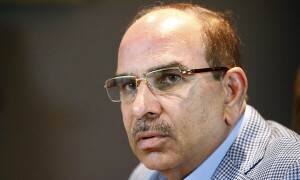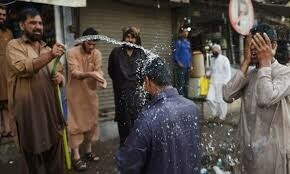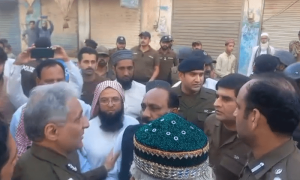I CAN tell you with some authority that there are no good days at ITO, a madly busy traffic junction in New Delhi. In the last 18 years that I have been in this city, I don’t think I have ever managed to cross this junction in one go or without glaring at drivers who seem to think that they own the roads.
A few months ago, I was stuck at the ITO traffic signal as usual on my way back from office when a fight ensued between two taxi drivers. Thanks to their altercation, everyone was delayed. I was itching to clobber a few (yeah, Delhi traffic does that to you) and as I scanned for my first target, I spotted someone smiling at me from the other side of the road. It was kind of a benign smile, almost teasing me about my plight and at the same time asking me to calm down.
It was Mahatma Gandhi.
Before you think I was/is hallucinating, here is the real story: I was actually looking at a life-size mural of the Mahatma on the walls of the Delhi Police Headquarters (PHQ). It took me by surprise because I did not expect to see something like that on the walls of Delhi and that too on the walls of the PHQ, the nerve centre of the 80,000+ force.
The mesmerising painting done by German artist Hendrik Beikirch and Indian artist Anpu Varkey is a part of a street art project called St+art Delhi. “I noticed that it was a dense site — in the middle of so many people, buildings — and understood that the painting needed to unify so many different opinions in that chaos,” Beikirch later told The Wall Street Journal in an interview. On Jan 30, the 66th death anniversary of Gandhi, the city’s lieutenant governor unveiled the mural.
“One of the key requirements of street art is a good location for the visual. The Mahatma’s mural works beautifully because of the location of the PHQ,” St+art Delhi project curator Giulia Ambrogi, who is from Rome, told me.
St+art artists have redefined many public spaces in Delhi which otherwise has an appalling public art scene. Whatever little we have in the city, mind you some artworks are very expensive, is a result of a fertile imagination of art agnostic bureaucrats and well-networked artists. Naturally such collaborations produce eyesores and at times so excruciatingly modern or facile that the public finds no resonance in them.
Street art, said Ambrogi, can redeem such situations by functioning as open-air galleries. The importance of having accessible artwork is also important in countries like ours because art galleries are usually off-bounds for most people. “There aren’t many art galleries in Delhi and whatever we have are mainly private ones that focuses on the commercial aspect of art. In most galleries — be it state-run or private — the staff is not welcoming and their communication with viewers is not strong so that kind of puts off people,” explained Ambrogi.
In contrast look at how art museums — or for that matter any museum — functions in the West. In New York, for example, many art events take place in plazas of museums. This allows the general public to see artworks without paying anything. “It is not only about viewing artworks but also sharing a community space. Through this project, we want to develop a community space for those who live around the artworks,” said Ambrogi.
One of the key reasons why democratisation of art has not happened in countries like India is because people are not exposed to art while in school and museums also have no specialised personnel to engage children when they visit them. So a visit to a museum becomes a boring affair for most. So it is important to create art spaces where everyone can view and enjoy art in an informal way.
Like brick-and-mortar museums, street art also has certain ground rules when it comes to positioning/displaying of artworks. “Other than the location, the architecture of buildings — the canvas for such works — and visibility are important. We need plain walls without too many windows or external designs,” said Ambrogi. For example, artists found Lodhi Colony, a quiet green residential area mainly for government officials, ideal for such work because the buildings are standard government buildings without any external ornamentation. The walls are smooth, the roads are broad which allows views to enjoy the canvas without any obstruction and from the other side of the road.
“India’s streets are so vibrant ... there are so many people on it. But there is hardly anything on the walls that soothes the senses. But street art is not a ‘beautification’ project. It is also about exhorting the community that live/work around these artwork to keep the place clean,” said Ambrogi.
St+art along with the Delhi Urban Shelter Improvement Board has also worked on some temporary shelters for the homeless of Delhi to enhance their visual appeal, giving a new face to these structures and visibility to the people who live in them. A similar festival has happened in Mumbai also.
In a city that is paranoid about security, getting permissions from authorities is never easy. “When we decided to paint Gandhi on the police headquarters, it took several rounds of discussion to get the final ‘look’ cleared. We were told that three things would not be acceptable on any wall in the city: obscenity, political and religious content. We agreed with the restrictions because our intention is not to create trouble,” said Ambrogi. “But by and large we have found officials a bit surprised at our endeavour but open to ideas.”
Delhi may not have its Banksy yet, whose satirical street art and subversive epigrams combine dark humour with graffiti on the streets, walls, and bridges of cities throughout the world, but the street art project is shaking up things, bit by bit.
Twitter: @kumkumdasgupta
Published in Dawn, August 9th, 2015
On a mobile phone? Get the Dawn Mobile App: Apple Store | Google Play














































